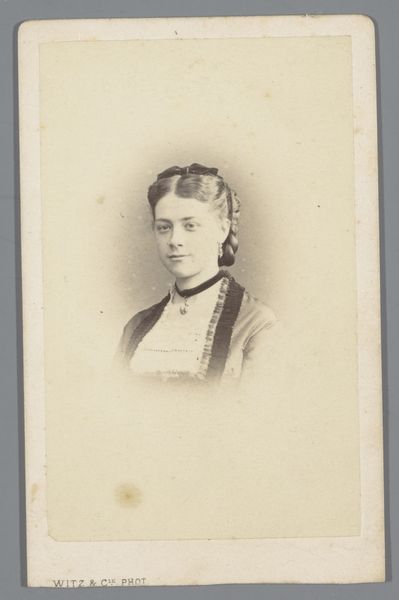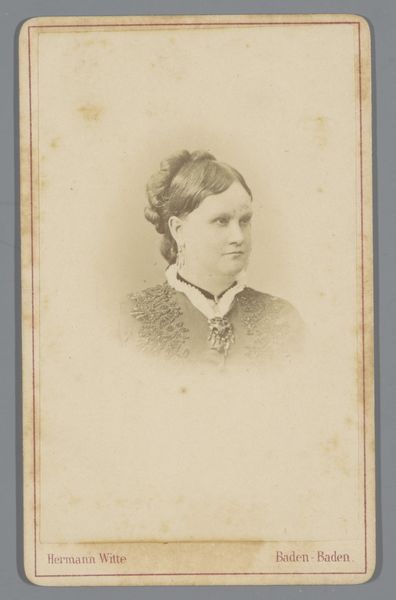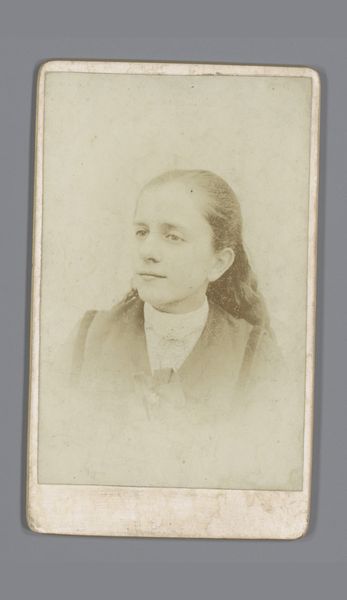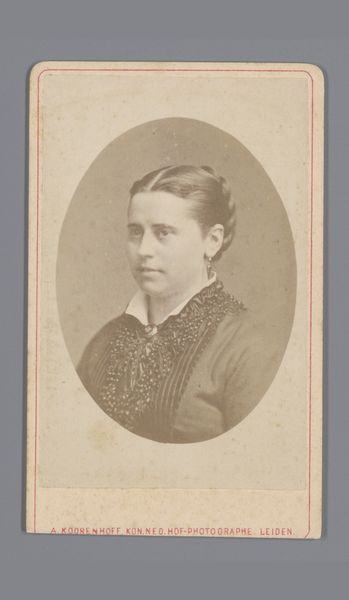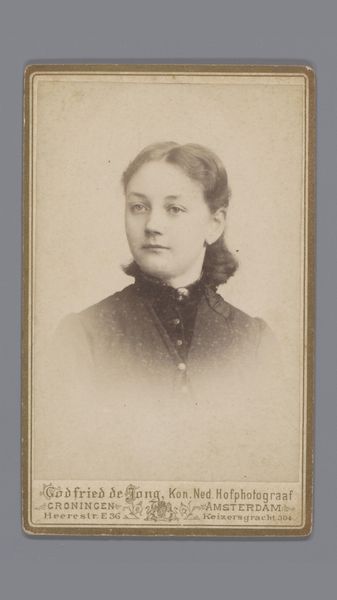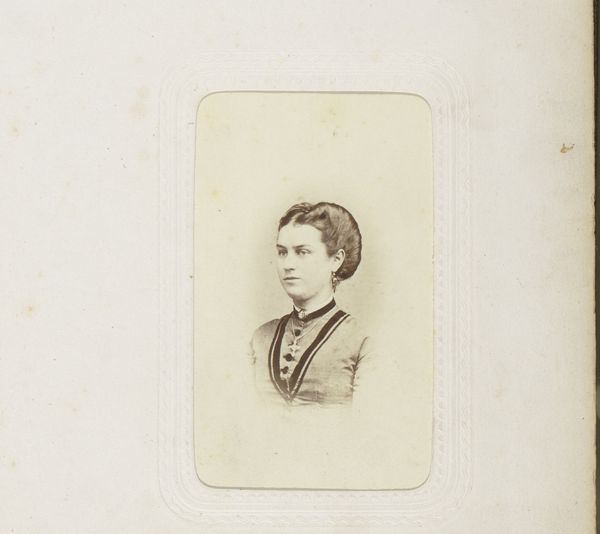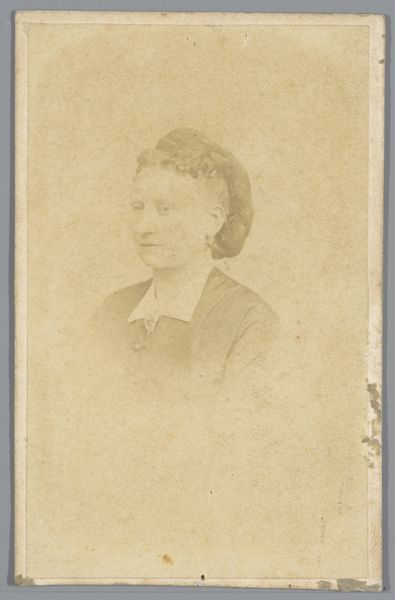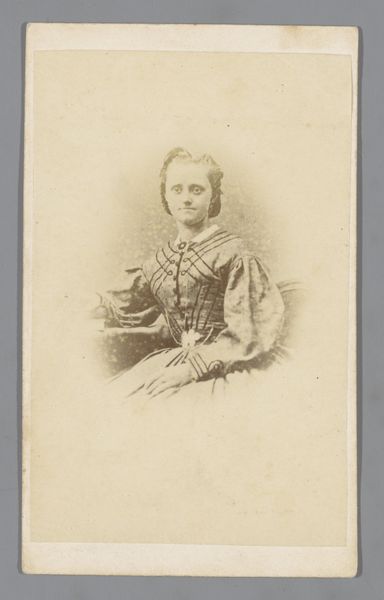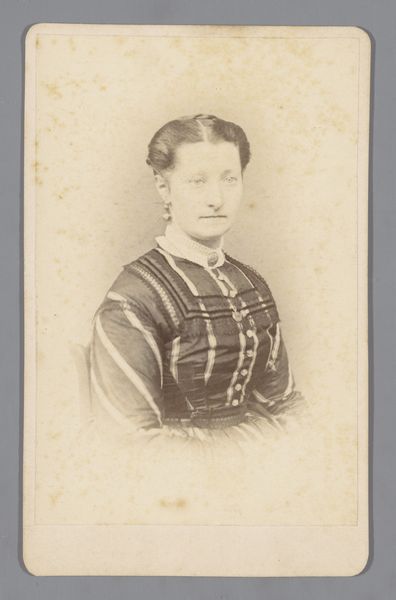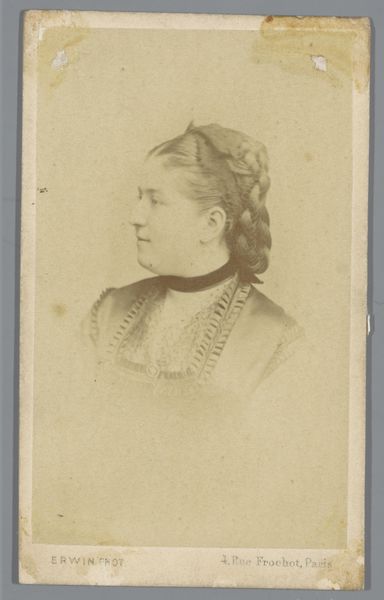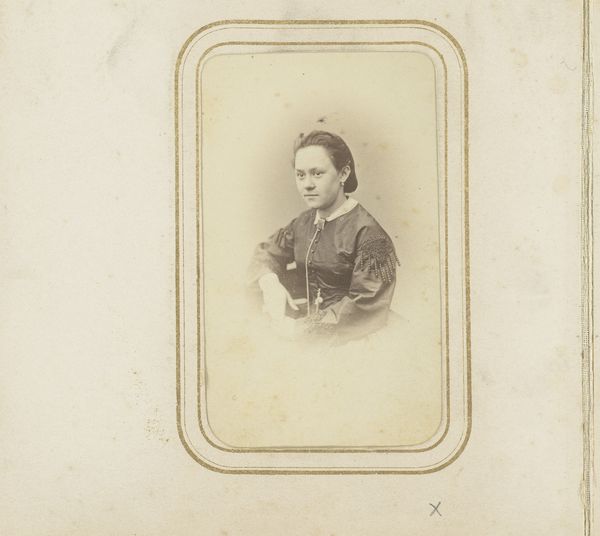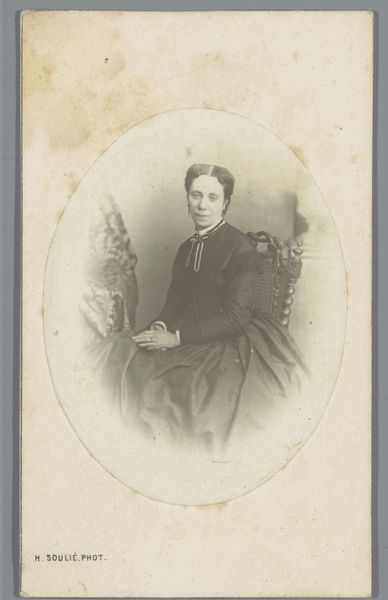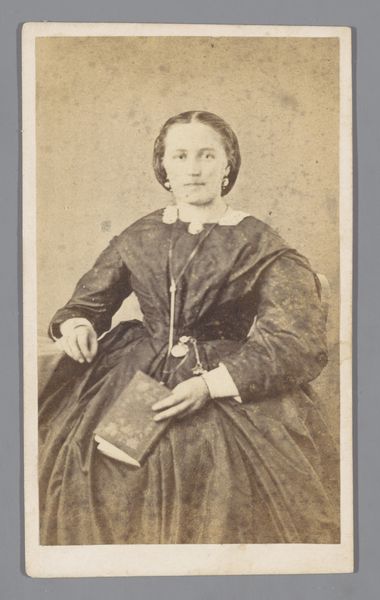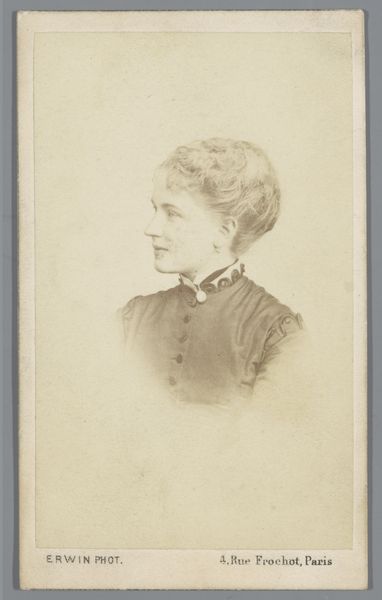
#
aged paper
#
toned paper
#
light pencil work
#
homemade paper
#
pale palette
#
light coloured
#
personal sketchbook
#
watercolour illustration
#
sketchbook art
#
watercolor
Dimensions: height 100 mm, width 63 mm
Copyright: Rijks Museum: Open Domain
Editor: Here we have "Portrait of an Unknown Woman," dating from between 1865 and 1896 by Albert Dekema, housed here at the Rijksmuseum. It looks like watercolor on paper, and what immediately strikes me is its quietness, its reserved mood. What do you see in this piece? Curator: The woman's steady gaze certainly projects a specific emotional intensity. But what I find compelling is how much this image embodies the emerging power of photography in the late 19th century and how that influenced portraiture. Do you notice how the neutral backdrop almost isolates her? Editor: Yes, she seems very self-contained, almost separate from her surroundings. Curator: Consider the democratization of portraiture at that time. Photography was making portraits accessible to a wider public, influencing painters who also explored a different means for capturing individuals. This reserve could be seen as a reflection of the subject's inner life and perhaps a challenge to established, often performative, representations of status. Think about what jewelry she is wearing. What might it indicate about this person’s inner feelings or their status in society at the time? Editor: That's interesting! I hadn’t considered that the symbolism would shift because of changes in how portraits were produced and received. I focused on her internal state and what it means as a viewer in today's society. Curator: Precisely. Visual symbols acquire new emotional, cultural, and psychological weight with the changing times. Our understanding of a single earring is likely to have dramatically evolved. Editor: It gives me a whole new appreciation for the artist’s context, seeing it less as a straightforward portrait and more as a reflection on identity during a transformative era. Thanks. Curator: And I’ve seen how important it is to have the work inform personal feelings, a useful skill for considering how a previous era’s continuity can influence our modern life and feelings.
Comments
No comments
Be the first to comment and join the conversation on the ultimate creative platform.
